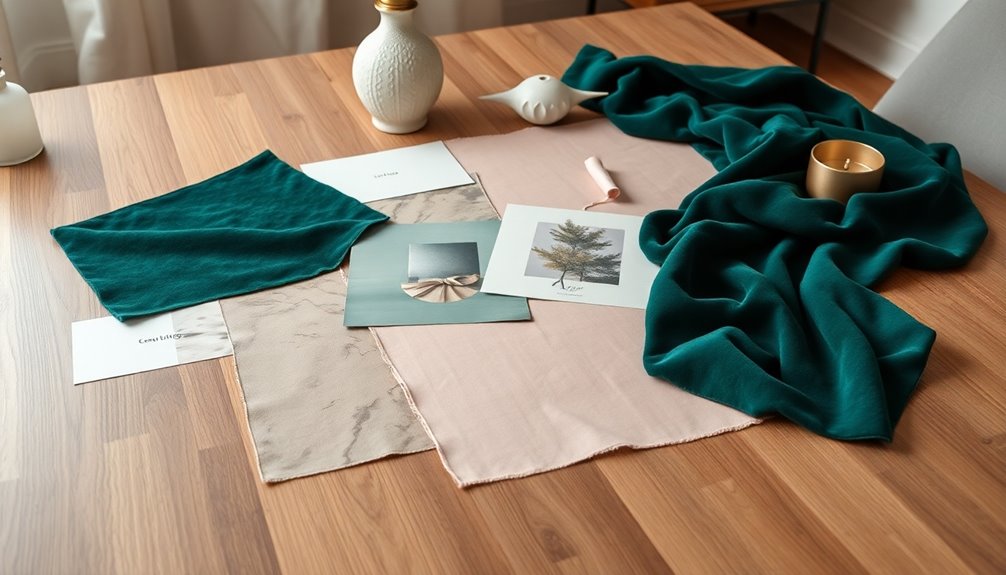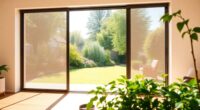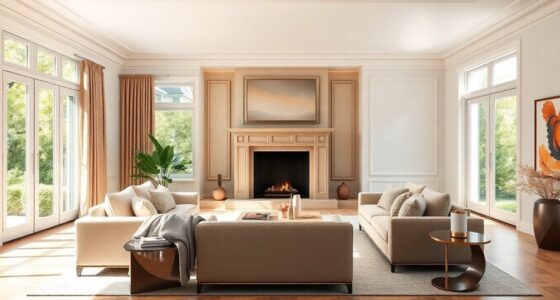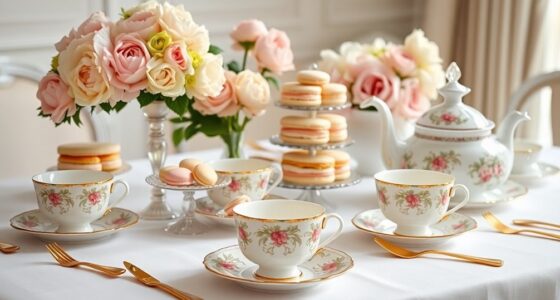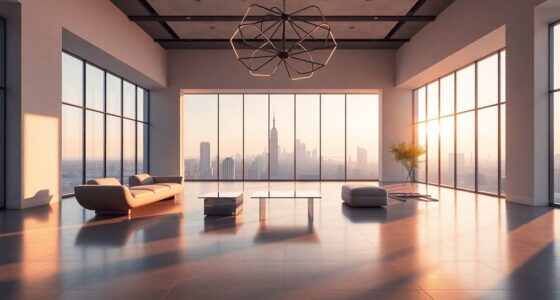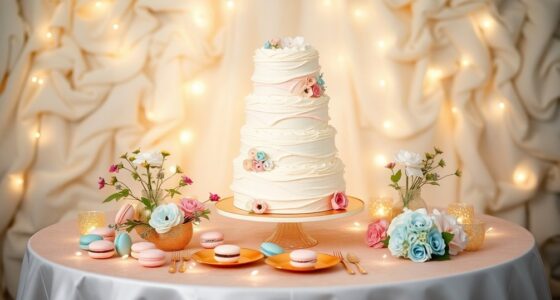Creating your interior design mood board starts with identifying the space and your style goals. Gather inspiration from websites, Pinterest, or social media. Focus on base and accent colors, textures, and furniture shapes that resonate with your vision. Organize your ideas by using a grid to keep things tidy. Include images, color swatches, and notes on elements you want to retain. As you align everything, consider your lifestyle to ensure your aesthetic truly reflects you. If you explore further, you’ll uncover tips to enhance your board and achieve that dream aesthetic you envision. Additionally, think about incorporating elements that promote comfort and tranquility, especially if your space will serve as a sanctuary for downtime. For instance, you might want to incorporate areas dedicated to men’s retreat relaxation activities, such as a cozy reading nook or a spot for meditation. Finally, don’t hesitate to experiment with different layouts and arrangements on your mood board until you find a combination that perfectly aligns with your vision and supports your desired lifestyle.
Key Takeaways
- Define your space and design goals, considering functionality and existing elements to create a focused aesthetic vision.
- Gather inspiration through digital platforms like Pinterest and design websites to curate themes and ideas.
- Identify base and accent colors along with shapes and textures to establish a cohesive color palette and design patterns.
- Organize your mood board using a grid layout for clarity, incorporating images, color swatches, and textures for visual impact.
- Seek client feedback and refine your board to ensure it reflects their lifestyle and preferences effectively.
Purpose of a Mood Board
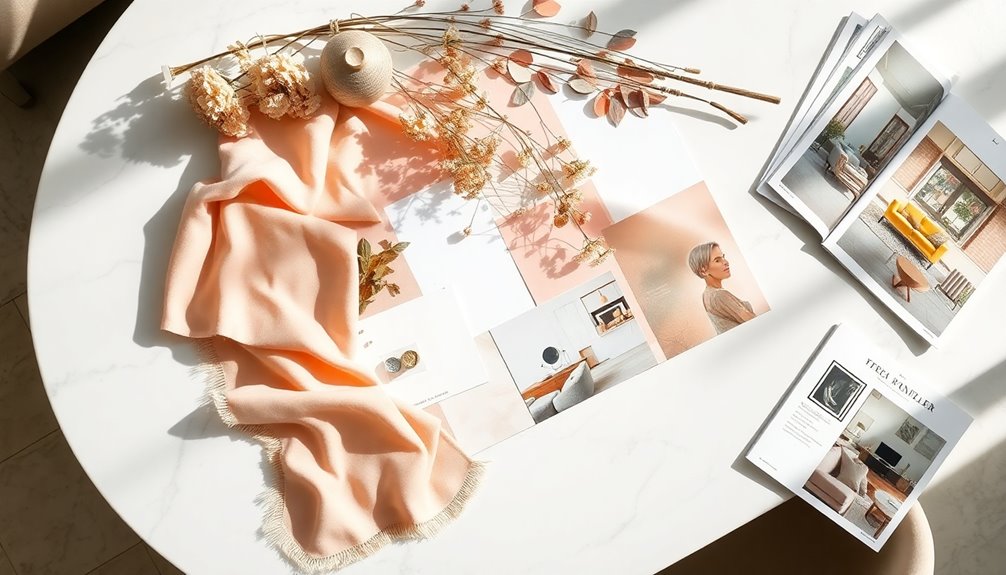
A mood board serves as a powerful visual tool in interior design, allowing you to blend various elements like colors, textures, and furniture into a cohesive story. Its primary purpose is to communicate your ideas clearly, helping clients visualize the design before implementation. By involving clients in the creation process, you enhance their engagement and satisfaction, making them feel invested in the project. This collaborative tool encourages feedback, ensuring their preferences are considered. Additionally, a well-thought-out color palette sets the desired ambiance and guides your design choices, promoting harmony throughout the space. Ultimately, a mood board establishes clear direction, streamlining the design process and helping you visualize the end result effectively. Mood boards help align client expectations with the designer's vision, establishing a cohesive aesthetic direction.
Choosing Your Approach
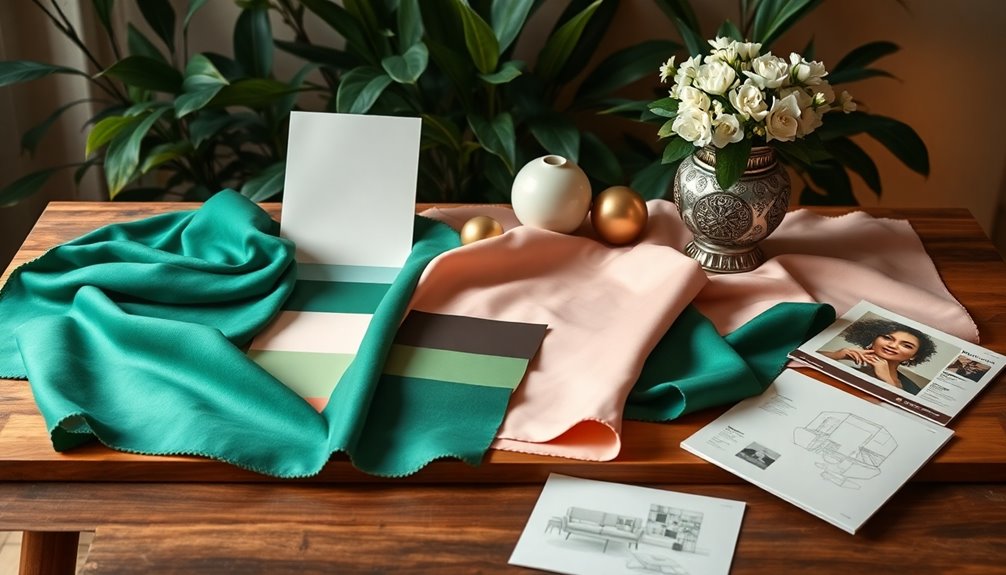
When embarking on your interior design journey, it's crucial to choose an approach that aligns with your vision and needs.
Start by deciding on your design needs: identify the specific space, define its function, and set clear design goals. Don't forget to consider your budget and assess any existing elements you want to keep.
Next, select between a mood board or a concept board. A mood board helps refine your design preferences, while a concept board provides detailed product information. Mood boards are essential in maintaining focus throughout the interior design journey.
Identify patterns and themes by noting base and accent colors, shapes, and textures.
Finally, research and compare products that fit your vision, ensuring they meet both functional and aesthetic needs. This structured approach sets a solid foundation for your design journey.
Gathering Design Inspiration
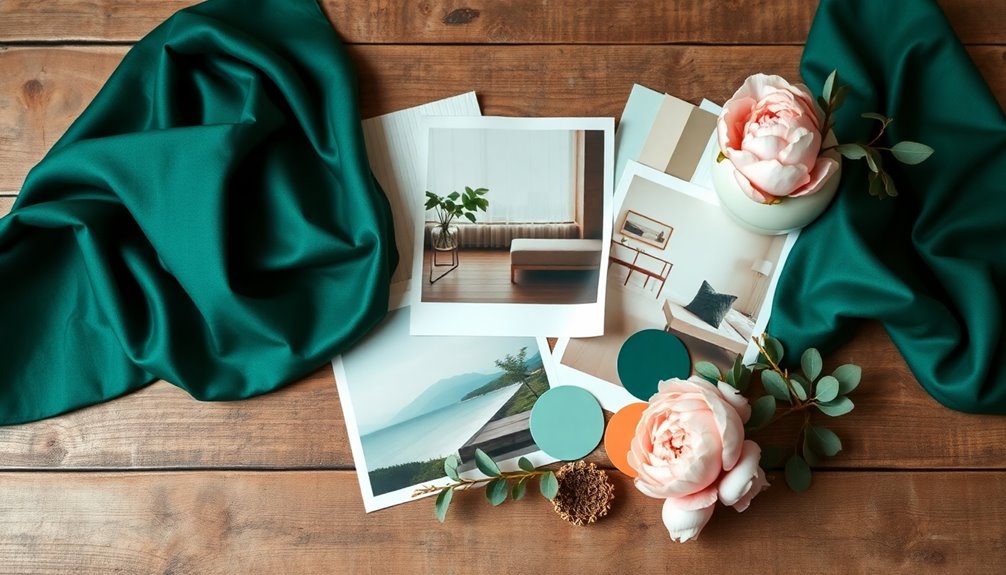
Once you've set your design approach, it's time to gather inspiration that reflects your vision.
Start by bookmarking your favorite design websites. Organize them into folders for easy access—think "Typography" or "Web Design."
Pinterest is another fantastic tool; create boards for different themes and pin images that resonate with your project. Curated design content can also be found on platforms like AIGA Eye On Design, providing insights into modern aesthetics. Additionally, exploring new design styles can introduce you to innovative concepts that may enhance your aesthetic.
Don't forget to follow designers on platforms like Instagram and Behance to keep your feed filled with fresh ideas.
You can also create inspiration boards using digital tools like Canva or physical boards filled with fabrics and sketches.
Explore new design styles and cultures to broaden your perspective.
Let your imagination run wild, and keep track of those spontaneous ideas that may spark your creativity!
Identifying Design Patterns
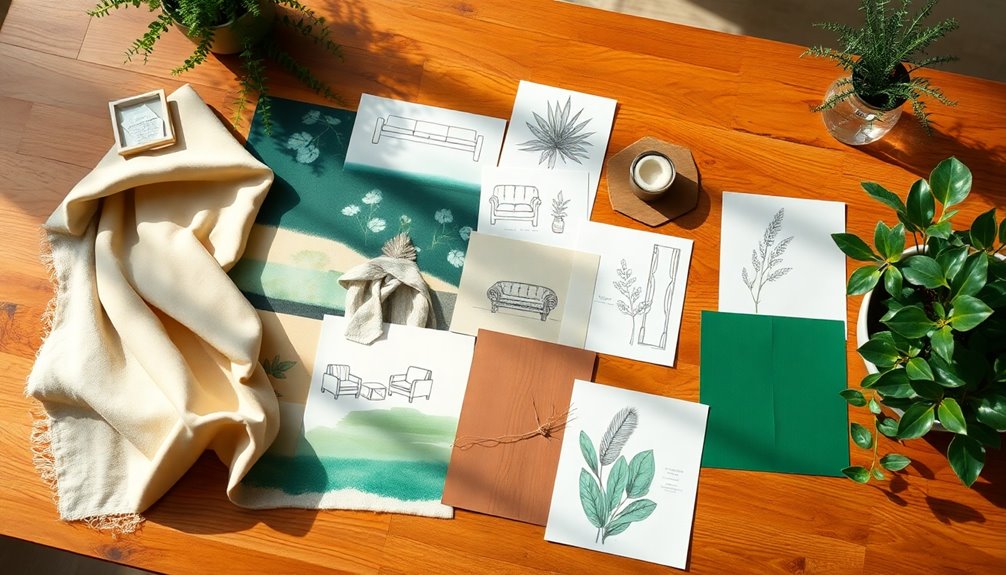
Identifying design patterns is essential for creating a cohesive and visually appealing space. Start by pinpointing your base colors, like wall shades and flooring, and determine if they're warm or cool.
Next, note your accent colors found in decorative elements such as throw pillows and artwork. Ensure these colors harmonize for a balanced look.
Then, examine the shapes in your design. Are there clean lines or organic curves? Identify geometric forms and strive for variety while maintaining balance. Recognizing personal tastes can also guide your choice of shapes to ensure they resonate with your aesthetic.
Lastly, take stock of your decor and art styles. Recognize different patterns—stripes, florals, or geometrics—and consider their placement. Mixing and matching patterns can add visual interest, but ensure they align with your overall aesthetic for consistency.
Organizing and Finalizing Your Board

Creating an organized and finalized mood board is crucial for visualizing your interior design project effectively.
Start by aligning elements using a grid to eliminate clutter and categorize items by size. Incorporate a perspective grid to provide a realistic layout and customize room elements like paint and flooring. Consider including farmhouse-style lighting fixtures to enhance the ambiance and overall aesthetic of the space.
Add inspiration images and color swatches to enhance visual clarity, and don't forget to embed product links for easy reference. Additionally, consider using full-room moodboards to showcase the space as if viewed from within, enhancing client comprehension of the design.
When creating your composition, anchor key elements and leave blank space for visual harmony. Review any client feedback to refine your design, ensuring it reflects their lifestyle.
Finally, use templates for efficient organization, making your mood board not just a visual tool but a personal expression of style.
Frequently Asked Questions
Can I Create a Mood Board Digitally?
Yes, you can definitely create a mood board digitally! Tools like Canva make it easy for you to design visually appealing boards without any cost.
You can gather inspiration from Pinterest, organize images, and select color palettes that resonate with your vision.
Once you've arranged everything, you'll have a digital mood board that captures your ideas perfectly.
Just remember to save and share it for easy reference later!
What Tools Can I Use to Make a Mood Board?
Imagine you're planning a wedding and want to capture the perfect vibe. You can use Canva to create a mood board.
It offers templates, making it easy to combine images of flowers, dress styles, and color palettes. You can also explore Adobe Creative Suite for more advanced options.
If you prefer hands-on methods, gather fabric swatches and paint chips to create a physical board that showcases your vision beautifully.
How Do I Share My Mood Board With Others?
To share your mood board with others, you've got several options.
You can email it as a PDF or JPEG, or upload it to cloud storage and share the link. Collaborative tools like Canva allow for real-time sharing too.
If you prefer a physical approach, print copies or create a presentation.
Don't forget to use communication tools like Slack for discussions or video calls to review it together.
Is There a Specific Size for a Mood Board?
Did you know that the default digital mood board size is 11" wide by 8.5" high? While this is common, there's no specific size requirement for mood boards; it really depends on your project.
You can even go larger for physical boards, showcasing elements like flooring and cabinetry. Just keep in mind the image resolution and visual clarity to ensure your board effectively communicates your ideas without overwhelming the viewer.
How Often Should I Update My Mood Board?
You should update your mood board regularly throughout your design process.
Start with an initial draft, then revise it as you gather new ideas and client feedback.
As your concepts evolve, incorporate changes in materials, colors, and furniture selections.
Aim for updates at key milestones and before finalizing your design.
This keeps your vision aligned and reflects any shifts in trends or preferences, ensuring your mood board stays relevant and effective.
Conclusion
Now that you've gathered inspiration and identified your design patterns, it's time to bring everything together. Picture your dream aesthetic coming to life as you organize and finalize your mood board. But wait—what unexpected element might elevate your design? As you step back and take a final look, you'll find that the perfect touch could be hiding in plain sight. Trust your instincts, and let your creativity guide you; your dream space is just a board away.
